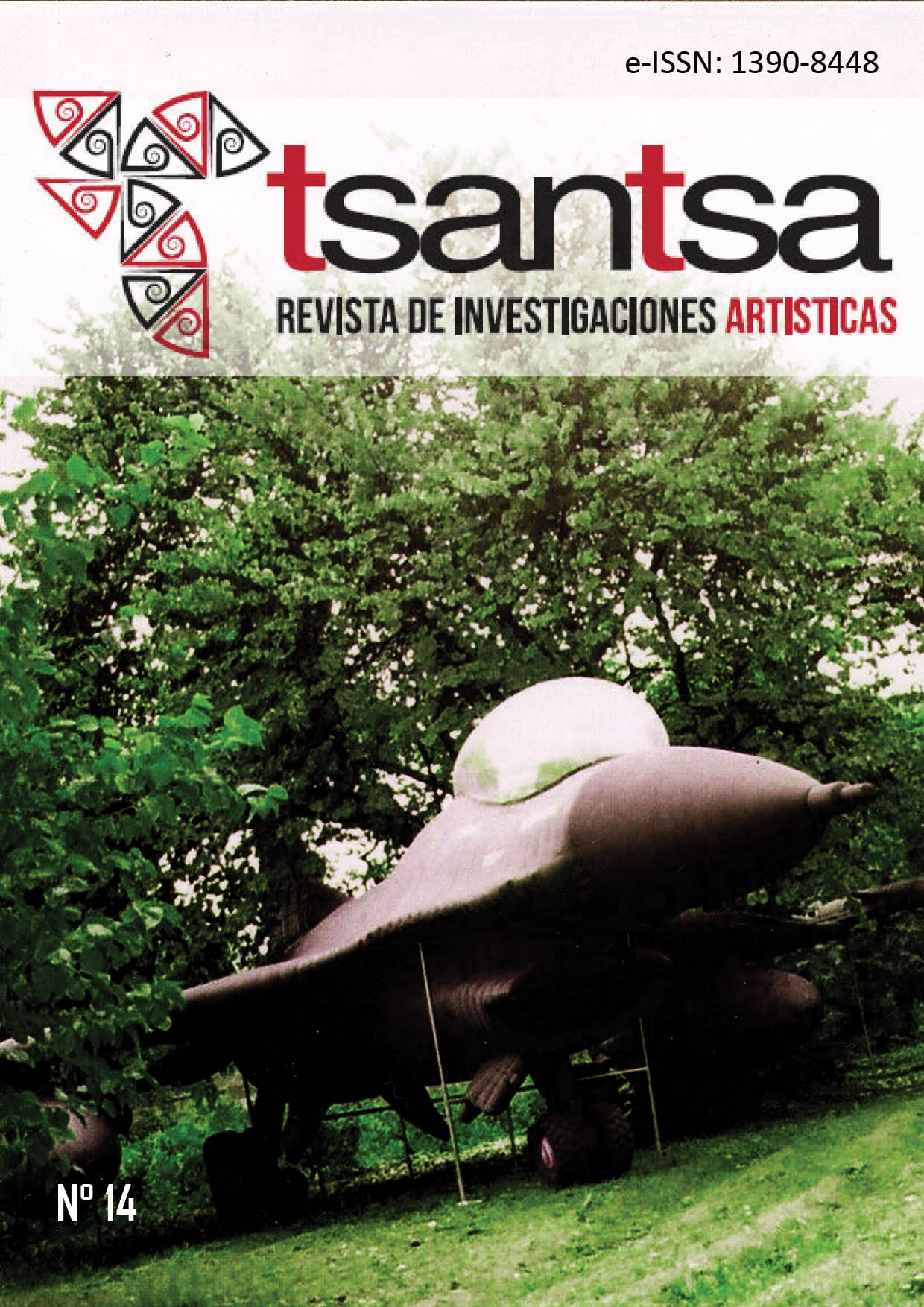Surroundings, borders and peripheries: Towards a musicology of the margin
DOI:
https://doi.org/10.18537/tria.14.01.01Abstract
It is said that common sense is only common among people who have experienced the same things. In this assertion, as in so many others, periphery exists with respect to an imagined center and is constituted as a border of the normality of a group, of its types of thinking and, perhaps even, of its tastes and feelings.
However, as happens in art, it is usual for single verses and anomalies to provide us with more interesting cultural testimonies, with more nuances and greater symbolic load than other representatives of the norm.
In the same way, boundaries and contours have a much more dynamic and dramatic role in research than in everyday life, stirring and redefining inherited foundations, always in perpetual movement and, therefore, relentlessly eroding the idea of a single reference.
This work will review, in its broadest sense, some of the ontologies (the study of being and its properties), geographies (places in time), and epistemologies (research methodologies) of the margin as a relevant concept in musical cultures and, therefore, in the musicological research that attempts to interpret its complex manifestations.
Keywords: Musicology, margin, transdisciplinarity, intersectionality, emptiness.
Downloads
References
Asensio, S. (1997). Música y emigración. El fenómeno musical marroquí en Barcelona. Universidad de Barcelona.
Asensio, S. (1998). El rai o la conversión de un género en símbolo, Revista de Musicología, XXI/1, 215-230.
Asensio, S. (2001). Tijuana Grooves: El borde revisitado en la Electronica de NorTec. Arizona Journal of Hispanic Cultural Studies, 5, 55-72.
Asensio, S. (2002). The Politics of Hybridization in Rai Music, en G. Steingress (ed.), Songs of the Minotaur. Hybridization and Popular Music in the Era of Globalization (pp. 51-82). LIT Verlag.
Asensio, S. (2004a). El imaginario flamenco americano: Aura y Kitsch en la escena transnacional. Disparidades. Revista De Antropología, 59/2, 145–159. https://doi.org/10.3989/rdtp.2004.v59.i2.131
Asensio, S. (2004b). Asensio Llamas, Susana. The NorTec Edge: Border Traditions and Electronica in Tijuana, en D. Pacini, E. Zolov, H. Fernández-L’Hoeste (eds.), Rockin' Las Américas: The Global Politics of Rock in Latin/o America (pp. 312-331, 390-393). University of Pittsburgh Press.
Asensio, S. (2011). Torner y la Junta para Ampliación de Estudios, ARBOR. Revista de Ciencia, Pensamiento y Cultura, 187/751, 857-874. https://doi.org/10.3989/arbor.2011.751n5004
Asensio, S. (2020). The Past Is Home: Eduardo Martínez Torner in Postwar London—An Exile’s Nostalgia for Spanish Musicology, en T. Fruehauf (ed.), Postmodernity’s Musical Pasts: Historicity and Temporality after 1945 (pp. 195-224). Boydell & Brewer Ltd.
Asensio, S. (2023). Charla-concierto sobre el exilio de E. Martínez Torner, Oviedo, organizado por Tribuna Ciudadana, con los músicos Charly Blanco, Lía Marcos y José María Aladro, https://www.youtube.com/watch?app=desktop&v=4mtXycLBI5c
Bauman, Z. (2013). La cultura en el mundo de la modernidad líquida. Fondo de Cultura Económica.
Canzio, R. (1992). Mode da fonctionnement rituel et production musicale chez les Bororo du Mato Grosso. Cahiers de musiques traditionnelles, 5, 71-95. https://doi.org/10.2307/40240126
Canzio, R. (1997). Text and music in Bororo chanting., Société Suisse dês Américanistes/Schweizerische Amerikanisten Gesellschaft, Bulletin, 61, 63-70.
Crenshaw, K. (1989). Demarginalizing the Intersection of Race and Sex: A Black Feminist Critique of Antidiscrimination Doctrine, Feminist Theory and Antiracist Politics. University of Chicago Legal Forum, 1989/1, 139-167.
Kauffman, S. A. (2000). Investigations. Oxford University Press.
Klein, J. T. (1990). Interdisciplinarity: history, theory, and practice. Wayne State University Press.
Labajo, J. (2011). Sin contar la música. Ruinas, sueños y encuentros en la Europa de María Zambrano. Endymión.
Lévi-Strauss, C. (1955). Tristes tropiques. Plon.
Madrid, A. L. (2008). Nor-tec Rifa!: Electronic Dance Music from Tijuana to the World. Oxford University Press.
Mandelbrot, B. B. (1975). Les objets fractals: forme, hasard et dimension. Flammarion.
Manzano, M. (2021). Cancionero de folklore musical zamorano. Museo Etnográfico de Castilla y León.
Medina, A. (2023). Fernando Palatín y Garfias: dos inventarios de su repertorio para la orquesta municipal de Eaux-Bonnes (1884-1907), en C. Diego, M. B. Dufourcet e Y. Nommick (Eds.), Au-delà des Pyrénées. Dix siècles de musique entre France et Espagne. Essais en l’honneur de Louis Jambou (pp. 157-186). Presses Universitaires de Bordeaux.
Morin, E. (2008). On complexity. Hamptom Press.
Rey García, E. (2021). Cancionero palentino. Fundación Joaquín Díaz.
Rey García, E. (2022). Romancero palentino. Fundación Joaquín Díaz.
Seroussi, E. (2019). Ruinas sonoras de la modernidad. La canción popular sefardí en la era post-tradicional [traducción y edición de S. Asensio]. CSIC.
Steingress, G. (2006). Sociología del cante flamenco. Signatura.
Theise, N. (2023). Notes on complexity. A scientific theory of connection, consciousness and being. Spiegel & Grau.
Trías Sagnier, E. (1985). Los límites del mundo. Ariel.
Virolle, M. (1995). La chanson raï: de l'Algérie profonde à la scène internationale. Karthala.
Washabaugh, W. (1996). Flamenco: Passion, Politics and Popular Culture (Explorations in Anthropology). Routledge.
Downloads
Published
How to Cite
Issue
Section
License

This work is licensed under a Creative Commons Attribution-NonCommercial-ShareAlike 4.0 International License.



